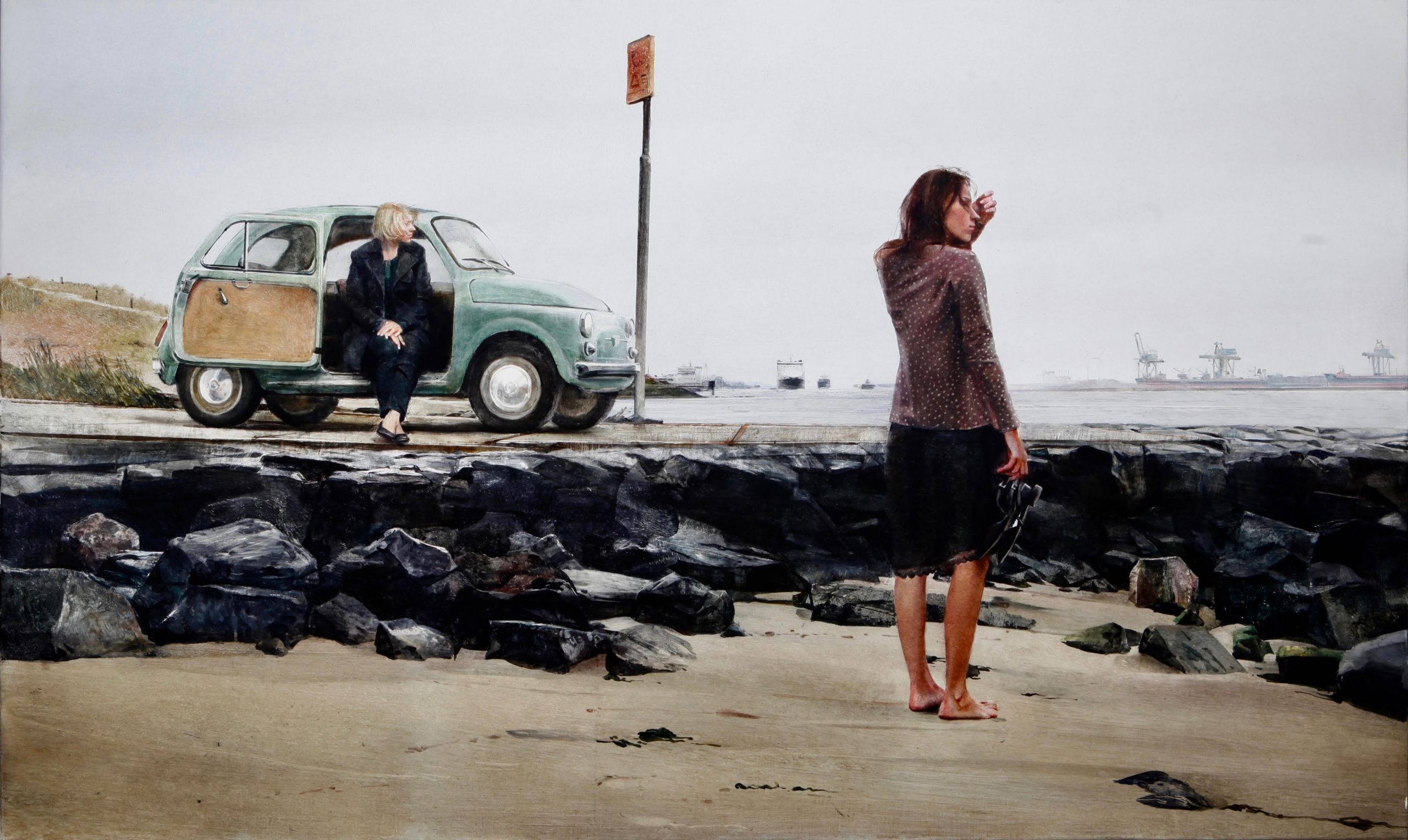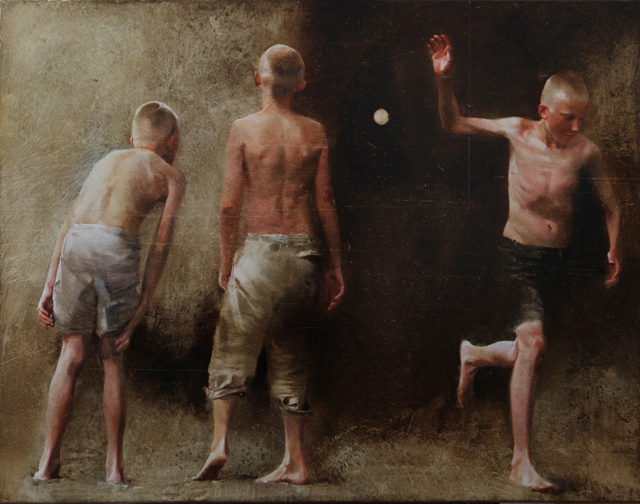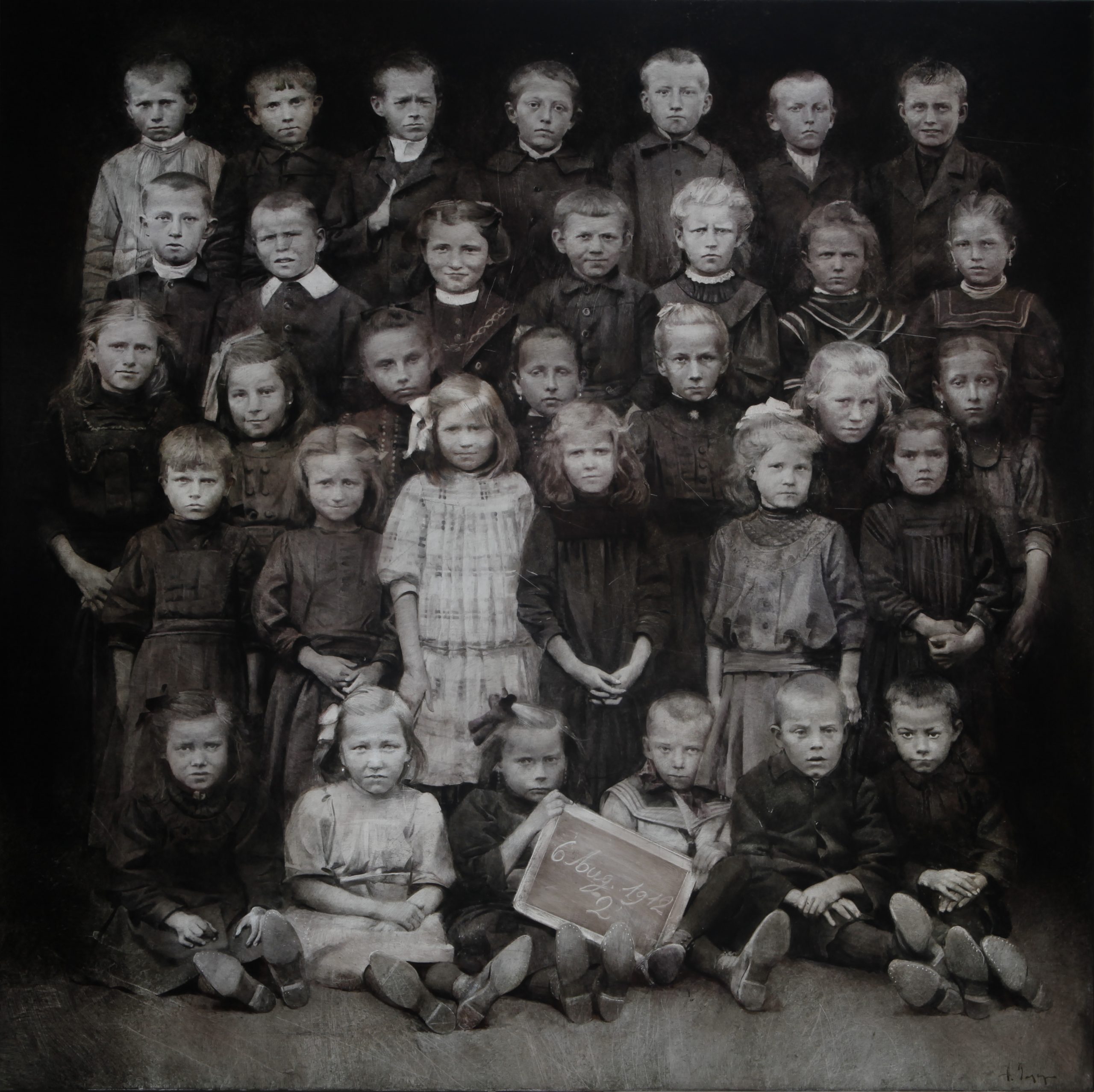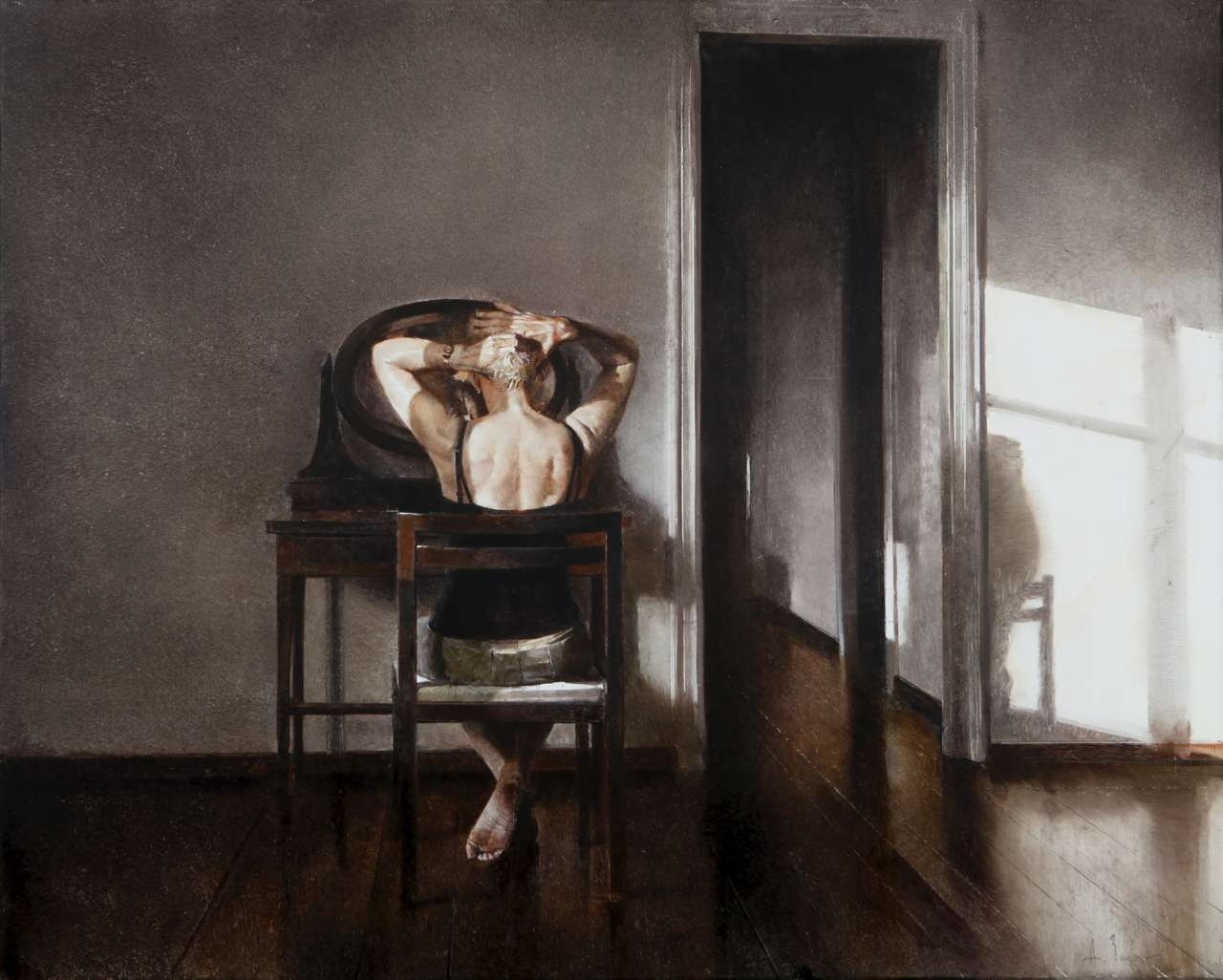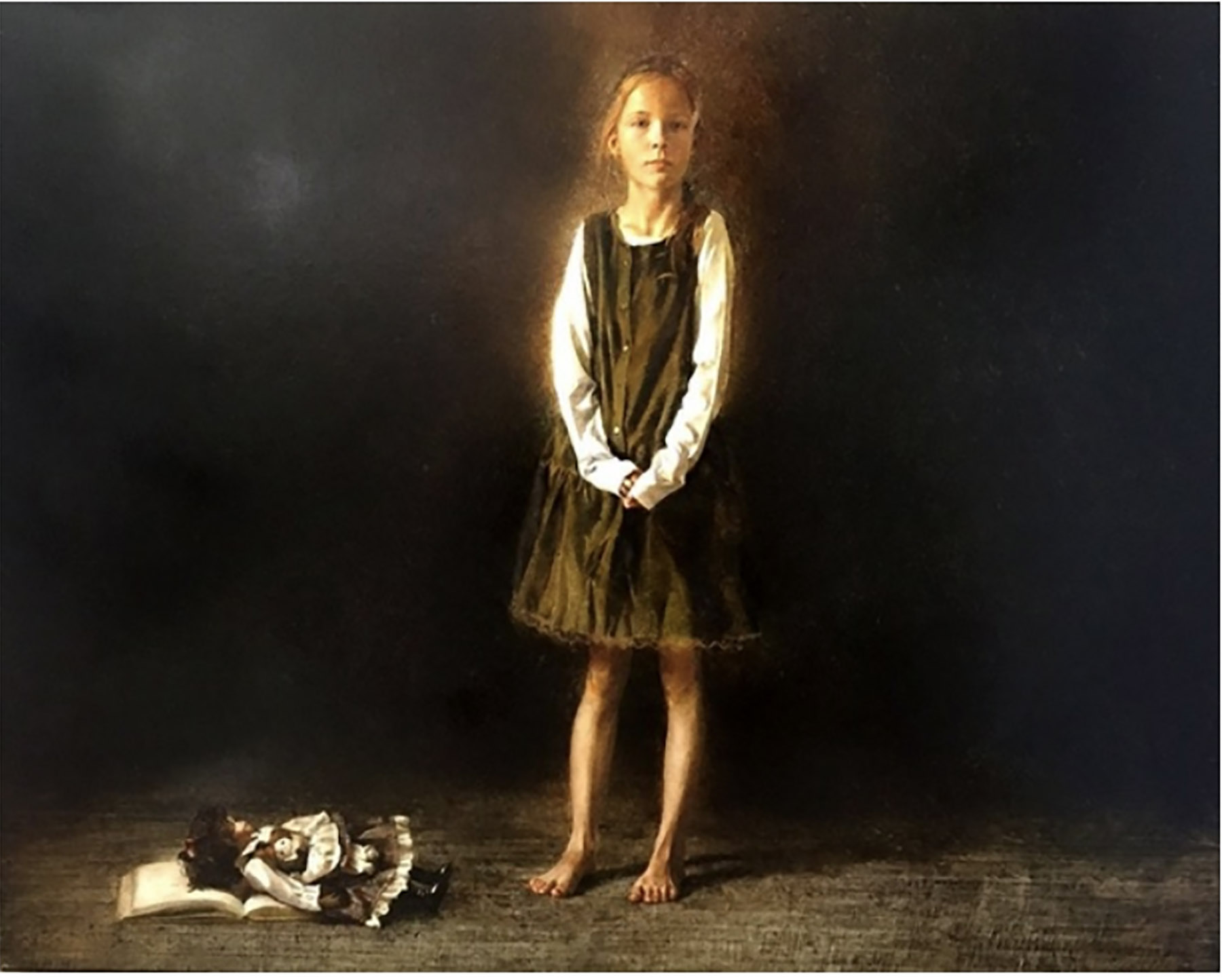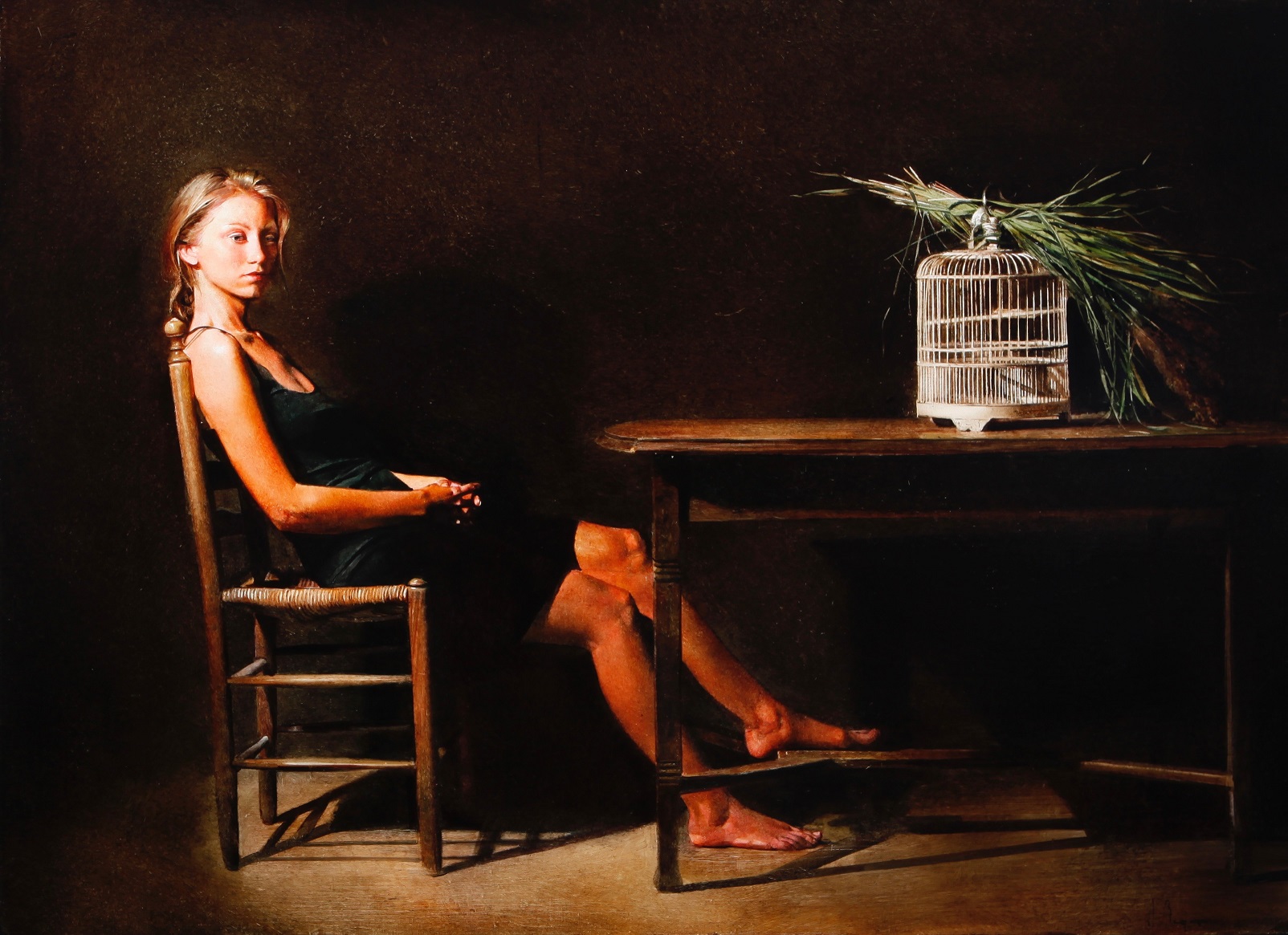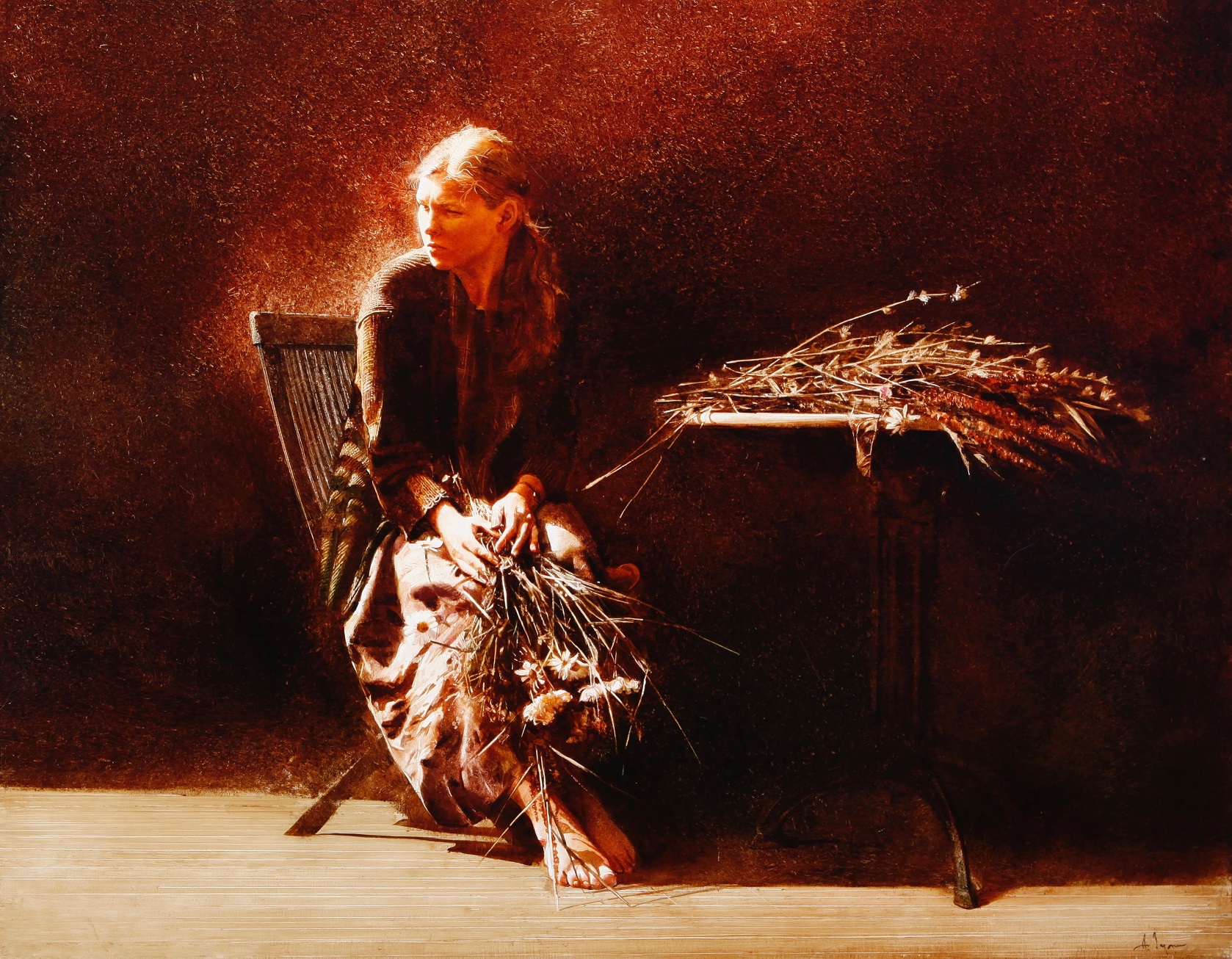ANDREI ZADORINE–(BIELORUSSE 1960)
PEINTRE
FR
ANDREI ZADORINE appartient à une génération d’artistes biélorusses qui ont connu à la fois les contraintes du régime soviétique et l’ouverture politique et culturelle de la perestroïka. Né en 1960 près de la ville de Berezovka, dans les montagnes de l’Oural russe, il a grandi dans un milieu intellectuel près de Minsk, en Biélorussie. Son père était ingénieur et sa mère cardiologue.
Dès l’enfance, il dessinait sans cesse et admirait profondément Rembrandt, dont il ne connaissait pourtant que des reproductions en noir et blanc. C’est surtout l’atmosphère mélodramatique de ses œuvres qui le fascinait. Il n’était pas seul dans cette inclination : son compatriote Marc Chagall avait déjà souligné le caractère profondément humain des toiles du maître hollandais, qu’il qualifiait d’« est-slave ».
Zadorine a étudié à l’Académie des beaux-arts de Minsk au début des années 1980 (1980-1984). À cette époque, la Biélorussie restait fidèle à des doctrines artistiques strictes, alors même que la Russie s’ouvrait progressivement à la scène internationale. Suivant le modèle socialiste traditionnel, il y apprit à produire un art dit « réalisme social » : un art figuratif, centré sur des thèmes sociaux, conçu pour le peuple et par le peuple.
En jeune artiste, Zadorine ne s’opposait pas à ces contraintes techniques et thématiques. Il s’intéressait davantage au travail de l’Américain Andrew Wyeth, dont les intérieurs et paysages suscitaient un grand engouement en Russie à l’époque.
Pour son examen final, Zadorine réalisa Souvenir (1984), un autoportrait où il se représente entouré d’amis intellectuels partageant sa vision. Bien que l’œuvre s’inscrive dans la lignée du réalisme social, elle laisse déjà transparaître une vision plus sereine et confiante de l’avenir.
EN
ANDREI ZADORINE is part of a generation of Belorussian artists who experienced the limitations of Soviet rule as well as the new political and cultural openness of perestroyka. He was born in 1960 near the town of Berezovka in the Russian Ural Mountains, but grew up in an intellectual enclave near Minsk in Belarus. His father was an engineer and his mother a cardiologist. As a child he was always drawing and was a great admirer of Rembrandt’s though all he saw were black and white reproductions of his work. It was mainly the melodramatic atmosphere that appealed to him. He was not alone in this preference, for his compatriot Marc Chagall had already described the human aspect of the Dutch master’s paintings as « East Slavic ». Zadorine attended the art academy in Minsk in the early eighties (1980-1984). Strict doctrines were still adhered to at the time in Belarus, though Russia was quite openly entering the international scene. Along traditional socialist lines, Zadorine learned to produce social realistic art, i.e. recognizable art with social themes for the people and by the people. As a young artist, Zadorine did not resist the limitations as regards technique and theme alike. He was more interested in the work of American artist Andrew Wyeth who attracted so much attention in Russia at the time with his interiors and landscapes. For his final examination, Zadorine painted Souvenir (1984), a self-portrait of the artist surrounded by like-minded intellectual friends. Though it bears a strong resemblance to social realism, it also reveals a calm look to the future.


